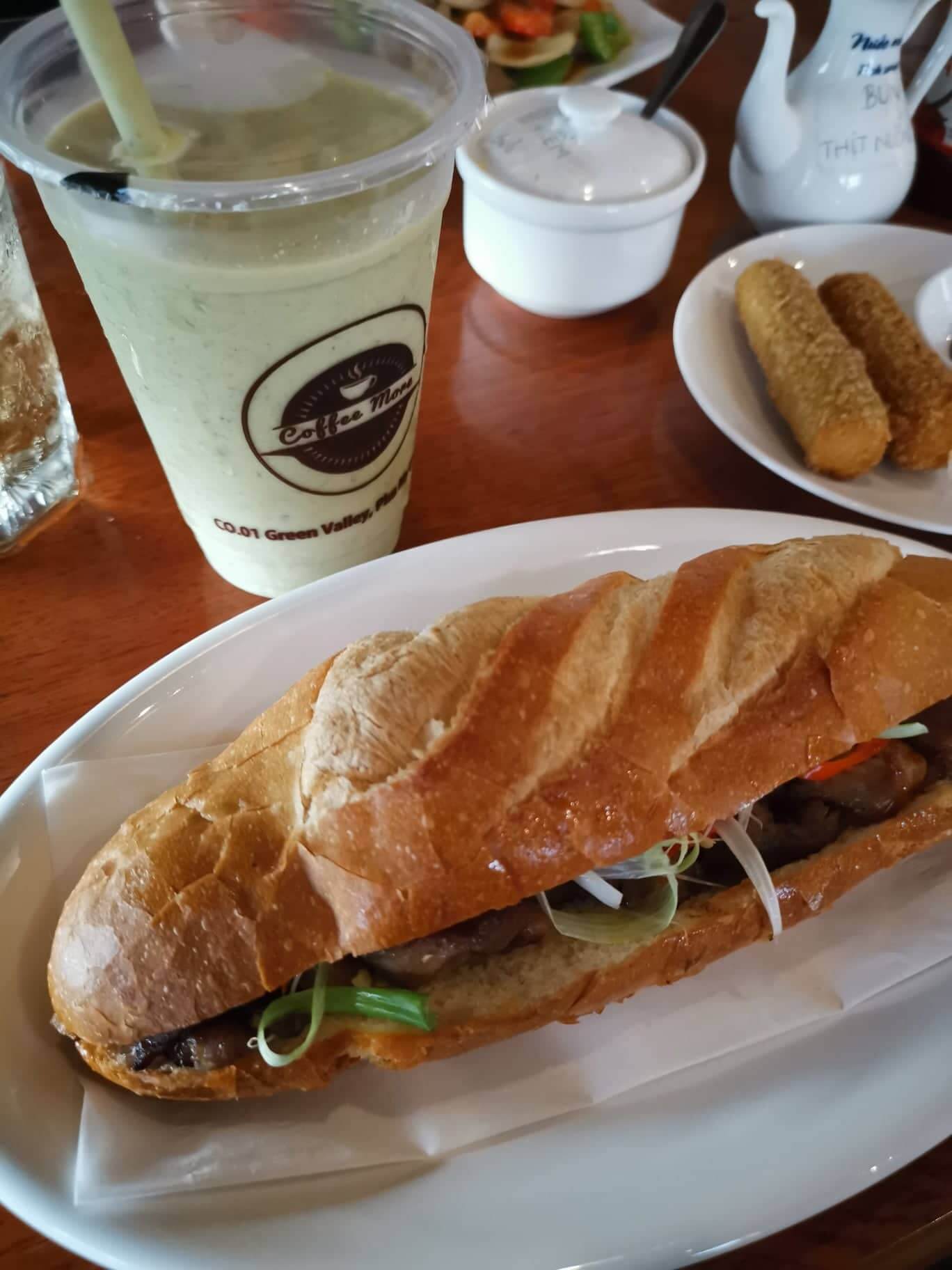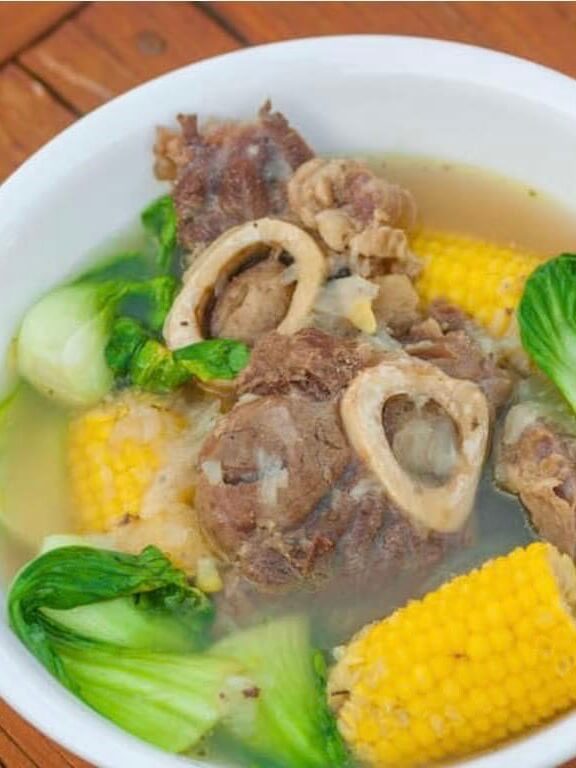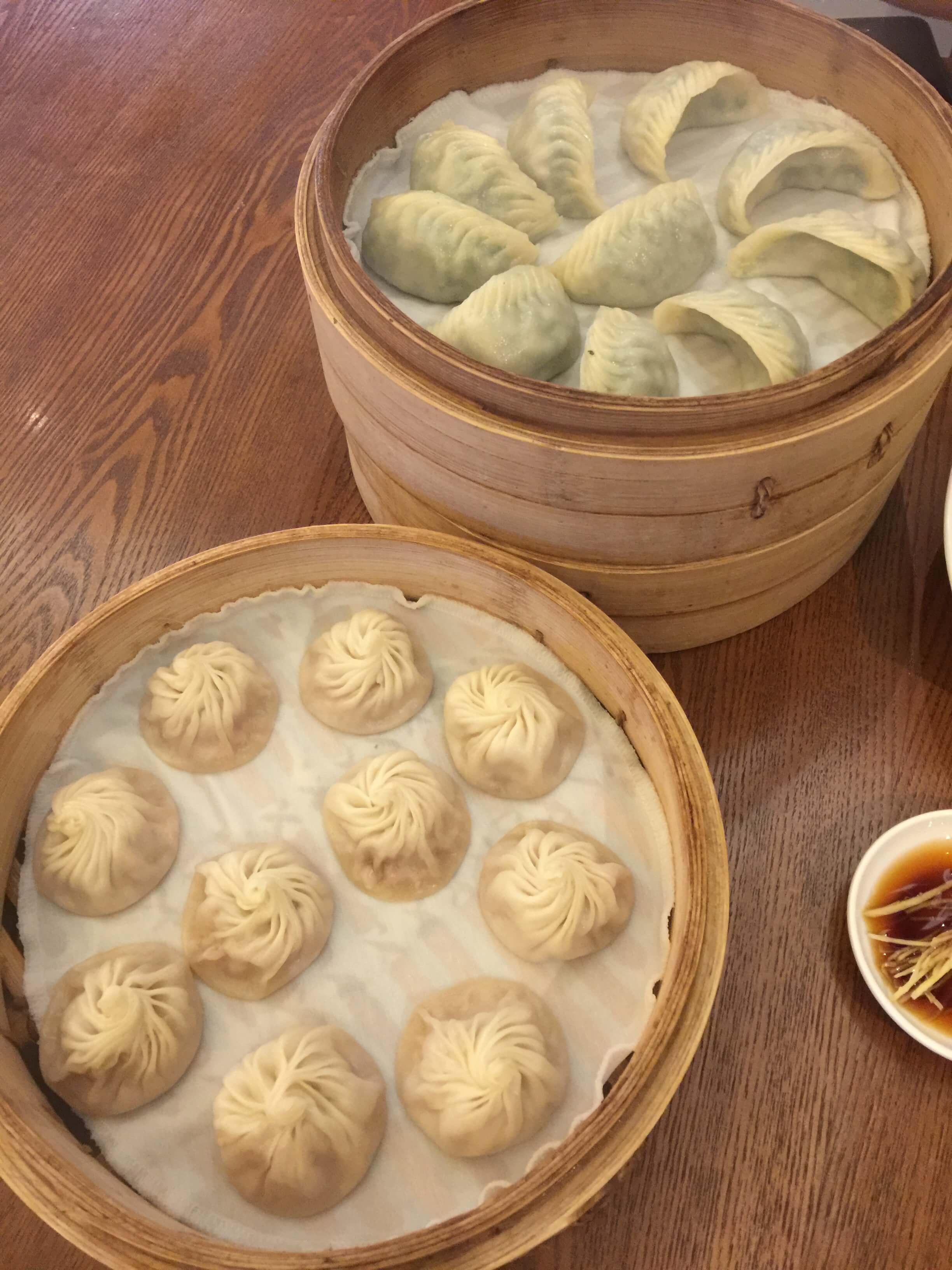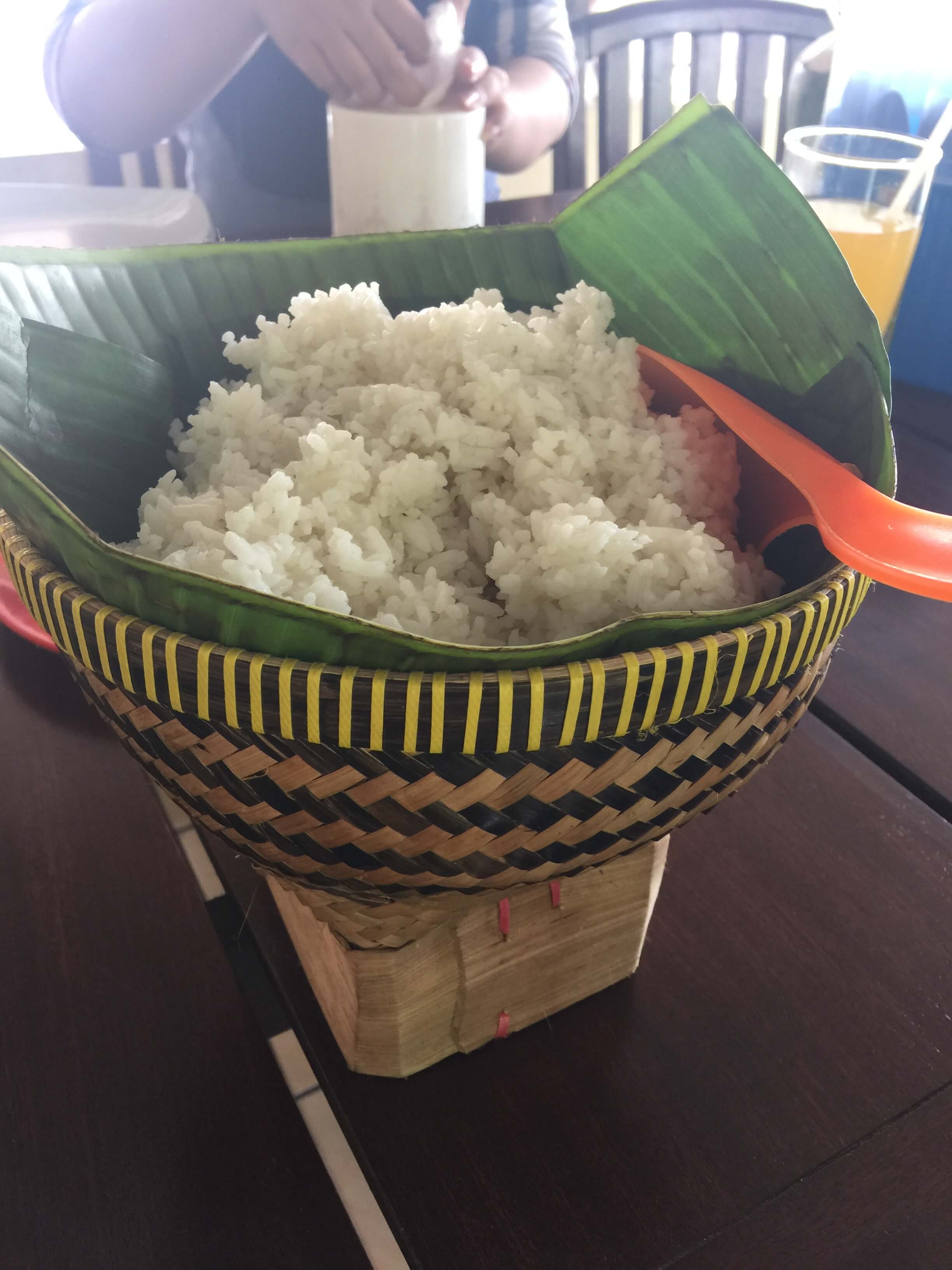Culinary revolutions -Asia- Longings - part 2
Hello there, are you hungry? Great, because me too.
Time to continue the kitchen revolution.
I'll start with the layout of the day.
Breakfast in Asia is really the most important meal. For years I started my day with coffee and… that was where my European breakfast ended.
This is a mistake.
Asians, regardless of the country, sit down to breakfast early in the morning, usually at 6am is done. They generally eat soups of all kinds, and they come in many forms. From rice gruel to beef-based heavy soups.
Soups are quite popular in Asia, not only for breakfast, but also for lunch.
In the Philippines, soups such as "sinigang" or "bulalo" are national specialties, so important that I will devote a separate article to them, including the recipe, because they are very tasty and easy to prepare. All the ingredients we need are available in Europe.
In addition, in Malaysia and China, a popular breakfast is thin noodles with soy sauce and pieces of pork - "wan tan mee" served with a tofu-based soup and local coffee - "kopi".
After all, rice - in all typical Asian dishes, you will find rice.
A special breakfast specialty for Viet Nam is the Banh Mi baguette.
Eggs, prepared in all ways, complete the breakfast menu throughout Asia.
Lunch or lunch is a ritual in Asia that starts around 11.45 am looking for a good, cheap, close to bar, restaurant or street market.
Rice with toppings reigns here. For example, in Malaysia and Indonesia with a chicken thigh, in China or Viet Nam, it can also be with chicken or, more commonly, with pork neck.
Knuckle is no exception, it is in China, or "Nasi lemak" - rice cooked with coconut milk, the addition of "pandan" leaves, a hard-boiled egg and sometimes chicken or pieces of pork, served on a banana leaf, then in Malaysia. A slightly different variant of "Nasi goreng" - fried rice with pieces of meat, in this case beef or chicken, and a mixture of vegetables, or "satay" - pieces of meat grilled on sticks, served with many types of sauces, are Indonesian specialties. A quite popular form of lunch for a group of people is a "hot pot", i.e. one or two kinds of broth and any constellation of meat and vegetables that we cook ourselves, enriching social relationships at the same time.
At 1pm, in Asia it is already "after lunch".
Finally dinner. From 6 p.m. to midnight, it is noisy everywhere, and families with young children eating dinner at 11 p.m. is a common sight. In Asia, children are not forced to go to bed after bedtime.
Oh, here's the choice. Everything is allowed.
Again “Hot Pot”, but also “Korean Barbecue” - a feast at a table grill with a tubular hood for a larger group of people. Lots of meats, seafood and vegetables.
It is also an opportunity to visit a seafood restaurant, which will be a separate topic.
I will just mention that the quantity and availability of seafood in Asia is really huge.
There is no such variety of oysters, clams, crabs, shrimps, lobsters, freshwater and deep sea fish anywhere in Europe except the Mediterranean basin.
I will devote a little more time and space to seafood in a separate article. Let me just mention here that one of my favorite dishes is clam chowder in lemongrass. It has a really unique flavor. These are also all kinds of shrimp. From small freshwater prawns to the tiger prawns I love. To that, I would also add oysters and squids.
I do not really like freshwater crabs and those from swampy areas in China, because their taste just smacks of silt, just like carp in Poland, and I don't like this taste. But crayfish in China is really a rarity. Absolutely. I can tell you that compared to Polish crayfish, they are probably even tastier due to the spices and sauce.
Without two words and a moment of doubt, I can say that the perfect place to enjoy the taste of seafood is Qingdao. You simply have everything straight from the sea, straight from the beach or a boat that came back from night fishing.
You can eat equally fresh and truly amazing seafood in Viet Nam and Indonesia. Wherever the Ocean is, these treats are available and are really well prepared.
As for other, in my opinion specific dishes, first of all chicken eggs seasoned in soy sauce, buried in the soil for a few weeks in the ground, and eggs with chicken embryos.
These are two specific and unique dishes in the world, or dishes, or delicacies in quotation marks, which are very common in Asia and Viet Nam.
I had the opportunity to try this egg that has been aged in soy sauce for three weeks in the soil and I can say it's very good. As for the egg with the embryo, I must admit honestly, I haven't tried it yet, although it is on my to-do list.
From the things specific to China, I will say the hen's feet - number 1 on the list, of course. But, but we in Poland also make crow's feet jelly - "cold legs" right? So maybe it's not particularly shocking. Perhaps only the sight of a person walking down the street biting his paw is not the most pleasant or at least we are not used to such views. The second such specific curiosity is eating beef tendons. Rather, we do not eat tendons in Poland and maybe in Europe. In our country, the tendon is considered production waste, while in China it is cooked and served with rice as a normal dinner dish.
I will not mention such delicacies as snakes or crocodiles so far, because I have not tried (except for the snake tincture), I do not know the taste, and I have not seen a restaurant that offers this type of delicacies. As soon as I know something, I will write it and I will definitely share my opinion and impressions.
This is the daily meal plan in Asia.
Let's go back to the comparisons
Of the things we have similar between Asia and Poland, in the first place I would mention beef tripe, which is common throughout Asia. Everyone eats them willingly, they are prepared and cooked very much like Polish tripe. They taste very good. The only difference is that they contain more oil and soy sauce in them as the main seasoning.
Another similar dish is of course the rotisserie chicken. Roasted chicken, boiled chicken, but also duck. In Poland, duck is also served roasted and the difference is that in Poland we do not serve the head, and in Asia both birds are prepared entirely, including the head, beak and legs. It looks a bit different and even weird, to be honest.
Asia uses a lot of oil, especially palm oil, which is cheap. In addition, most of the above-mentioned dishes are fried in deeply heated oil. Which is good because in some way it guarantees the hygiene of street food. As you probably know, in Asia it is commonly eaten on the street, in small bars, on the sidewalk or along the road. On small plastic seats, using plastic plates, plastic cups, plastic chopsticks or cutlery. Yes, cutlery. In Viet Nam, as well as in Indonesia, Malaysia, Japan or the Philippines, unlike China, cutlery is commonly used, not just chopsticks. A spoon and a fork for basic cutlery. Interestingly, the knife is practically not used in eating. Knives are generally used in the kitchen as a cook's tool for preparing dishes, while eating meals in Asia use a spoon, fork, and chopsticks.
What definitely combines Polish and Asian cuisine are dumplings. Dumplings have multiple forms in Asia. There are dumplings made like in Poland, i.e. in the shape of a crescent, there are also dumplings that are made in the form of sachets or bellows. There are also large dumplings that look like yeast rolls.
So if someone likes dumplings, Asia has a paradise. We have many opportunities to eat good dumplings stuffed with all kinds. Surprisingly, there is also the mushroom filling. Shrimp, crab, and pork fillings are common. There is also a vegetable, vegetarian filling, i.e. a green mass of ground vegetables filling the inside of the dumpling dough.
As for interesting facts about the style and method of eating, I can add that in Indonesia quite a lot of dishes are served on banana leaves, which are simply eaten with the hands or fingers, without using cutlery at all. It is similar in India, where quite a lot of people simply use banana leaves as a plate and eat a meal with their hands.
When we compare the way of serving dishes, the biggest difference is in China, where dishes are served on a round table, on many separate plates or bowls, and everyone puts what they like or what they like on their own plate or bowl. There is no culture of serving dishes or constructing a 3-course dinner menu as in Poland. As for the rest of Asia, there is also no standard of serving dishes in the order we know from Poland. You just serve different, individual dishes and everyone composes their own combination of flavors and decides the order in which to eat.
It is a bit different, and closer to our customs, in the Philippines, where we already deal with serving a meal in the form of the first and second course. In Indonesia, meals are mainly eaten with the family, so again on the table or on the landing there is a bowl of rice and many different dishes that you simply mix with each other.
An interesting option in Indonesia is "satay", i.e. scraps of meat stuffed on sticks and grilled. In this form, served on the table and everyone can easily grab a stick, whether with chicken or beef, tasty spiced and grilled. I believe that this is one of the better options for a delicious local dinner. Really tasty. And quite similar to Polish grilled shashlik.
As for the drinks that are drunk with meals, it must be said that the differences are significant. The standard is that even when you come to a small, private place or a street bar, you get a glass of iced tea as a drink while waiting for the selection and serving of the ordered dishes.
This custom is everywhere except in India. It is simply a cup or glass of cold or warm tea. In China this tea is always served warm, in Southeast Asia it is served as a chilled drink. In both cases it is usually jasmine tea.
Later, during the meal, we have a varied model. While in China you drink tea from a cup all the time, in Southeast Asia coconut milk, all kinds of teas and iced coffee are the standard.
Tea brewed with a ritual, in a jug, served in tiny cups or mugs is drunk after a meal, organizing a tea drinking celebration.
In Indonesia, Viet Nam and Malaysia, coffee is by far predominant as a side drink. Coffee is served practically with every breakfast in Malaysia or Indonesia. It is similar in Viet Nam.
The coffee culture in Viet Nam is not surprising. After all, it is the second largest coffee producer and exporter in the world (right after Brazil). It is common to see people of all ages sitting and drinking coffee in the morning in countless cafes. For this they eat either Banh Mi or the famous Vietnamese roll or simply a "French" croissant.
In Southeast Asia, it is common to drink squeezed sugarcane juice with the addition of lime, which is extremely healthy. Although it comes from sugar cane, it does not disturb the body's sugar processing, nor does it cause obesity. On the contrary. It is considered one of the drinks that supports the maintenance of good condition and the maintenance of the body weight.
And one more piece of advice - when you order coffee in Malaysia, Indonesia or Viet Nam, you must make it clear that you mean hot coffee, which we usually drink in Europe. Otherwise you will get the so-called "iced coffee" or coffee based on ice cubes.
As you can see, the number of similarities and differences is considerable. Adaptation to local cuisine occurs fairly quickly. We begin to appreciate the rich palette of flavors, aromas and styles after just a few weeks.
It is also easy to find flavors close to the Polish palate, some we will miss.
Globalization makes it no longer a problem to find any dish anywhere in the world.
Nevertheless, the longing for a well-made pork chop, sauerkraut and "young" potatoes in Polish style, remains ...
Xin cam on! Dziękuję! Salamat!
More new articles
Pages created with WebWave















